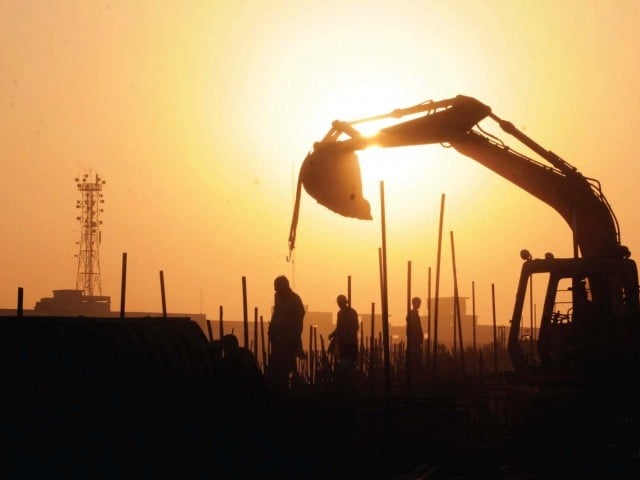
Pakistan’s national development budget will undergo a steep cut of Rs402 billion or 27% of the total annual allocation for the current fiscal year to keep overall budget deficit within the mutually binding limits agreed with the International Monetary Fund (IMF).
Against the National Economic Council (NEC) approved budget of Rs1.513 trillion for this fiscal year 2015-16, the development expenditures have been shown at Rs1.111 trillion in a report that the IMF released on Tuesday. The report was prepared after holding discussions with Pakistani authorities in November last year.
Big numbers: Massive increase in development budget

The NEC meeting, chaired by Prime Minister Nawaz Sharif with all provincial chief ministers in attendance, approved the development spending budget equivalent to 5% of Gross Domestic Product (GDP).
After applying the cut, development spending would come down to the same level as that of the last financial year in terms of total size of the economy.
In fiscal year 2014-15, total development spending stood at 3.7% of GDP; the IMF expects it to remain at the same level this year as well.
The IMF has projected the cut on development expenditures in order to achieve the overall budget deficit target of 4.3% of the total size of national economy or Rs1.292 trillion. The lower public sector investment will also carry implications for current year’s national output, which remains subdued due to a variety of reasons.
The IMF has said that the government will miss its economic growth rate target of 5.5%, projecting the current fiscal year’s growth at 4.5%; marginally higher than last year’s 4.2%.
The bulk of the cuts will be borne by the provincial development budgets, which will collectively see a cut of Rs313 billion, or 38.5% of their budgeted Rs813 billion. The federal development budget, by comparison, will be slashed by 12.7%, or Rs89 billion, of its budgeted Rs700 billion, the IMF projects.
The Rs700 billion includes Rs100 billion spending on military and Temporarily Displaced Persons (TDPs) affected by operation Zarb-e-Azb, which is technically not development spending. The Rs700 billion also included Rs20 billion of Prime Minister’s Youth programme.
Effectively, the development spending is Rs580 billion and out of that Rs89 billion will be cut, bringing it to fiscal year 2014-15 level of Rs489 billion.

Against budgetary allocation of Rs58 billion on account of net lending to public sector enterprises, the IMF has shown nil spending against this year. The government has already given Rs4.8 billion cash to Pakistan International Airlines (PIA) besides approving budget for paying salaries to the employees of Pakistan Steel Mills (PSM).
Another reason behind the slash is the surge in current expenditures. For the current fiscal year, the government has allocated Rs3.166 trillion for current spending. However, the IMF has projected that current spending will be Rs3.29 trillion - Rs123 billion higher than budgetary allocations.
“Pervasive tax evasion combined with still wide-ranging tax exemptions and loss-making state-owned enterprises constrain the fiscal space for public investment and social spending,” said the IMF in its report.
The IMF has also included an adjustor in the programme on development spending. It said that the ceiling on the overall consolidated fiscal deficit for this fiscal year will be adjusted downward for any shortfall in federal development spending, excluding one-off spending for security enhancements related to fighting terrorism and resettlement of internally displaced persons.
The IMF has not projected any change in this year’s Federal Board of Revenue (FBR) tax collection target of Rs3.1 trillion. Any shortfall in tax collection will also have adverse implications for current fiscal year’s development spending.
IMF forecasts steep development budget cut
However, the projections showed that the FBR’s collection against income tax and federal excise duties might remain below the targets. The less than projected collection against these two heads is shown to be compensated by higher collection on account of custom duties and sales tax.
The surprising increase is shown in collection of custom duties that has been projected at Rs361 billion - Rs62 billion higher than budgetary allocation.
Published in The Express Tribune, January 13th, 2016.
Like Business on Facebook, follow @TribuneBiz on Twitter to stay informed and join in the conversation.
1729161093-0/liam-(4)1729161093-0-405x300.webp)




1732084432-0/Untitled-design-(63)1732084432-0-270x192.webp)











COMMENTS (5)
Comments are moderated and generally will be posted if they are on-topic and not abusive.
For more information, please see our Comments FAQ